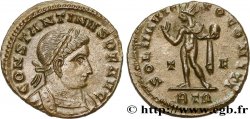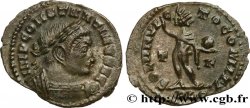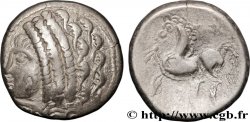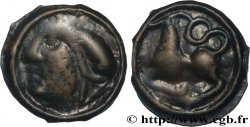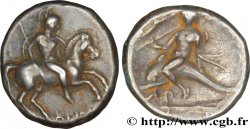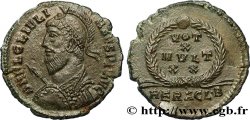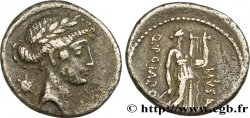E-auction 561-497561 - brm_609327 - CONSTANTINE I THE GREAT Centenionalis ou nummus
You must signin and be an approved bidder to bid, LOGIN TO BID. Accounts are subject to approval and the approval process takes place within 48 hours. Do not wait until the day a sale closes to register. Clicking on « bid » constitutes acceptance of the terms of use of cgb.fr private e-auctions.
Bids must be placed in whole Euro amounts only. The sale will start closing at the time stated on the item description; any bids received at the site after the closing time will not be executed. Transmission times may vary and bids could be rejected if you wait until the last second. For further information ckeck the E-auctions F.A.Q.
NO BUYER'S FEE.
NO BUYER'S FEE.
| Estimate : | 145 € |
| Price : | 54 € |
| Maximum bid : | 125 € |
| End of the sale : | 15 January 2024 14:11:00 |
| bidders : | 8 bidders |
Type : Centenionalis ou nummus
Date: 319-320
Mint name / Town : Siscia
Metal : copper
Diameter : 18,5 mm
Orientation dies : 6 h.
Weight : 3,01 g.
Rarity : R2
Officine: 5e
Coments on the condition:
Exemplaire sur un flan ovale bien centré. Beau buste de Constantin Ier. Revers de style fin. Patine verte
Catalogue references :
Obverse
Obverse legend : IMP CONSTAN-TINVS AVG.
Obverse description : Buste casqué et cuirassé de Constantin Ier à gauche drapé sur l’épaule, vu de trois quarts en avant, tenant une haste de la main droite (D*2).
Obverse translation : “Imperator Constantinus Augustus”, (L'empereur Constantin auguste).
Reverse
Reverse legend : VICTORIAE LAETAE PRINC PERP/ -|-// ESIS*.
Reverse description : Deux Victoires debout, face à face, posant un bouclier sur un cippe sur lequel on lit : VOT/PR ; croisette sur le cippe.
Reverse translation : “Victoriæ Laetæ Principium Perpetuæ/ Vota Populi Romani”, (À la victoire heureuse et durable du prince).
Commentary
Poids léger. Petit plumet. Casque clouté et décoré, cantonné de deux étoiles à six rais ou de deux chrismes primitifs. Cuirasse lisse. Ptéryges larges. Sur le casque, nous décrivions le casque “orné des étoiles des Dioscures”. En réalité, il faut plutôt y voir les premiers signes chrétiens du chrisme simplifié. Avec cette nouvelle hypothèse, nous sommes en présence des premiers signes chrétiens sur les monnaies de cuivre saucé trois ans après le médaillon de Ticinum (RIC 36) où le casque est orné d’un chrisme frontal sur le casque. Bouclier orné d’un cavalier galopant à droite terrassant un ennemi.
Lightweight. Small plume. Studded and decorated helmet, flanked by two six-pointed stars or two primitive chrisms. Smooth breastplate. Wide pteryges. On the helmet, we described the helmet “adorned with the stars of the Dioscuri.” In reality, we should rather see the first Christian signs of the simplified chrism. With this new hypothesis, we are in the presence of the first Christian signs on the sauced copper coins three years after the medallion of Ticinum (RIC 36) where the helmet is decorated with a frontal chrism on the helmet. Shield decorated with a horseman galloping to the right overcoming an enemy
Lightweight. Small plume. Studded and decorated helmet, flanked by two six-pointed stars or two primitive chrisms. Smooth breastplate. Wide pteryges. On the helmet, we described the helmet “adorned with the stars of the Dioscuri.” In reality, we should rather see the first Christian signs of the simplified chrism. With this new hypothesis, we are in the presence of the first Christian signs on the sauced copper coins three years after the medallion of Ticinum (RIC 36) where the helmet is decorated with a frontal chrism on the helmet. Shield decorated with a horseman galloping to the right overcoming an enemy







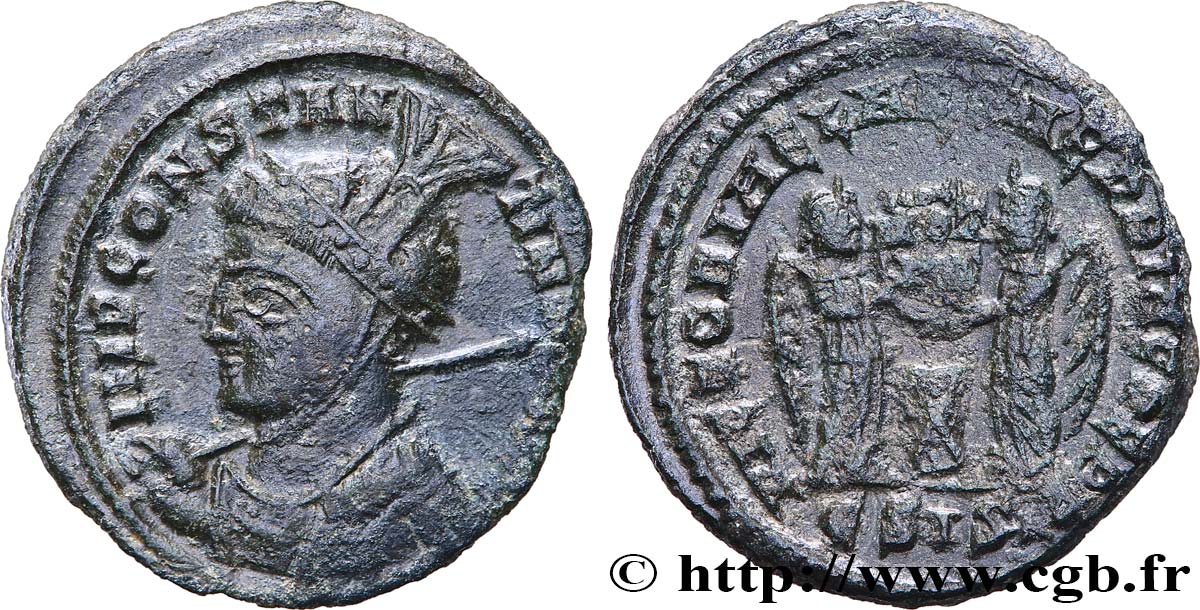
 Report a mistake
Report a mistake Print the page
Print the page Share my selection
Share my selection Ask a question
Ask a question Consign / sell
Consign / sell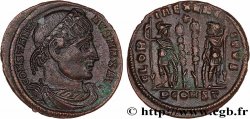
 Full data
Full data